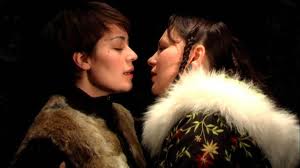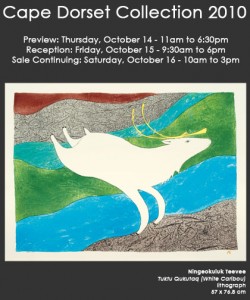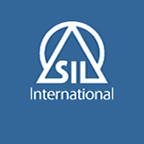Category — Module 4
Throat Singing – Blending traditional and modern styles
Tanya Tagaq and Cellina Kalluk throat singing
In Inuktitut, throat singing is called katajjaq, pirkusirtuk or nipaquhiit depending on the Canadian Arctic region. I was intrigued the first time I heard traditional, Arctic throat singing – likely on CBC Radio One. It seemed a music form in and of the past until I heard about Tanya Tagaq collaborating with Bjork.
From a little listening, reading and watching online I have learned more about the history of this music, how young people are being attracted to it, and the struggle between elders wishing to preserve the traditional throat songs and the young who want to make the singing relevant to their lives.
To learn more, I recommend the following links:
“Throat singing gets a modern twist.” CBC audio broadcast (March 17, 2002). Hear young musicians blend traditional throat singing with other musical styles like rock and pop and rap.
http://archives.cbc.ca/sports/more_sports/clips/6667/
“Preserving the sounds of the Arctic tundra: Throat singing” (2005). An article about the resurgence of throat singing.
Tanya Tagaq – Tanya explains and demonstrates throat singing. Video, 3 min.
https://www.youtube.com/watch?v=Phr1HVwrjlQ
Tanya Tagaq and her cousin Cellina Kalluk – This site has written information and links to audio and videos.
http://thepuredrop.com.au/artists/tagaq.htm
“A string quartet in her throat.” Collaboration of Kronos Quartet and Tanya Tagaq. Video, 7 min., 2006. Tanya says this work fulfilled her dream to “interpret her home through musicians.”
https://www.youtube.com/watch?v=0YTtUolJa9E&NR=1
Kathy Keknek and Janet Aglukkaq – Application for traditional performer at 2008 Arctic Games. Video, 6 min, 2007.
November 19, 2010 No Comments
Changing Art in the North: A reflection of social and environmental realities
Since the 1950s, Cape Dorset or Kinngait, the “Capital of Inuit Art” has been a centre for drawing, printmaking and carving. Today, printmaking and carving are the community’s main economic activities. But some older artists along with younger ones are creating art of a different nature, art that is less known and less valued in southern Canada – art that reflects the artists’ changing social and environmental context. The video “The New Raw” focuses on this situation.
The New Raw
Video 11 min. Radio Canada International (RCI)
Interviews with Cape Dorset artists and footage of their art inform the viewer of the diversity of northern art. The viewer hears that southern Canadian art lovers still seek and maintain the demand for Arctic art with traditional images – the animals of Inuit legends – but there is a growing number of Cape Dorset artists who produce art reflecting the social and environmental change of their day-to-day realities.
http://eyeonthearctic.rcinet.ca/en/video/video-categories/viewvideo/59/art-and-culture/the-new-raw
See also these RCI videos:
The Rebel – Jutai-Toonoo, 26 min.
http://eyeonthearctic.rcinet.ca/en/video/viewvideo/60/art-and-culture/the-rebel-jutai-toonoo
The Up-And-Comer – Ningeokuluk Teevee, 8 min.
http://eyeonthearctic.rcinet.ca/en/video/viewvideo/64/art-and-culture/the-up-and-comer-ningeokuluk-teevee
The Carver – Toonoo Sharky, 8 min.
http://eyeonthearctic.rcinet.ca/en/video/viewvideo/61/art-and-culture/the-carver-toonoo-sharky
The Printer – Niveaksie Quvianaqtuliaq, 7 min.
http://eyeonthearctic.rcinet.ca/en/video/viewvideo/62/art-and-culture/the-printer-niveaksie-quvianaqtuliaq
Note: In this video we see the making of the print of “Stiletto,” an example of a more modern stone cut art piece by Kavavaow Mannomee.
November 19, 2010 No Comments
The Indigenous Studies Portal (iPortal)
The Indigenous Studies Portal (iPortal)

Developed by the University of Saskatchewan library, iPortal has a over 30 categories of links related to Indigenous issues. According to the “About” page, the site hosts over 21,000 records.
As an example, the link to Languages has further links for Algonquian, Cree, Athabaskan, Dene & Na-Dene, Eskaleut – Inuktitut Aleut Copper, Iroquoia, Language Legislation, Michif, Mixed Languages, Oratory Skills & Practises, Origins & Movement, Preservation, Salishan, Siouan, Systems: Writing, Signing, Toponymics, Tsimshian, Wakashan. Each of these links refers to a page of selected articles. I wish I had come across this earlier in the process of writing my analytical paper.
This is a terrific resource! The only problem for our use is that the University of British Columbia is not one of the recognized institutions. This makes it a little more difficult to find linked resources. Luckily, the site also provides an easy Google Scholar search that can be used to find the resources outside of the educational framework.
November 19, 2010 No Comments
Harnessing technology to Serve Adult Literacy
Wow, I really liked discovering this page. It was chalked full of links to ideas, lesson plans, and tutorials all aimed at adult learning centers. The site even has links to software aimed at adult education settings and further links to reviews on the software. This site would be helpful to me personally at the job level but not really at the research level for theories etc.
November 18, 2010 No Comments
Indigenous Language Research, Development & Preservation
SIL International
Indigenous people living in remote regions in countries in the South focus on linguistic barriers to education; often the majority of people can not read or write in any language. In my research, I found the ngo SIL International frequently mentioned as assisting in indigenous communities with non-formal education programs in the mother tongue and with the production of educational materials.
The SIL website says its role in language development is “one of partnership with the local community, providing knowledge about language and culture to help communities make decisions and plan how they want their language developed.”
SIL has a long history of language research and development and preservation. Its website is interesting to explore.
For example, SIL’s publication index for Canada led me to SIL linguist Bill Jancewicz’ article Applied Computer Technology in Cree and Naskapi Language Programs in Language Learning & Technology, Vol. 6, (2), May 2002, pp. 83-91 available at http://llt.msu.edu/vol6num2/jancewicz/default.html
This article gives insight into the challenges and successes in the work of integrating computers into indigenous language development programs.
November 18, 2010 No Comments
Aboriginal Digital Opportunities
Greenall & Lizides (2001) Aboriginal Digital Opportunities: Addressing Aboriginal Learning Needs through the Use of Learning Technologies. The Conference Board of Canada.
This report broadened my perspective and knowledge about the use of computer technology in Aboriginal communities across Canada. It outlines benefits and challenges, and tries to provide Aboriginal perspectives on increasing digital opportunities. The document is based on a research study involving 10 communities selected to “represent a cross-section of Aboriginal communities ranging from urban to rural and from north to south.” Detailed description of each case study is provided in Appendix 1.
http://www.hrsdc.gc.ca/eng/hip/lld/olt/Skills_Development/OLTResearch/aborig_e.pdf
November 18, 2010 No Comments
Culture-Based Education
My research has led me to two Indigenous curricula, examples of “culture-based education”: Dene Kede and Inuuqatigiit in the NWT.
A brief description of both with links to each curriculum can be found at http://www.newteachersnwt.ca/culture_based_education2.html#sec1
Also, beginning this website is this Checklist for Teachers in Cross-Cultural Schools:
| Yes | Some | No | ||
| 1. | Does the culture of my classroom reflect the language and culture of the community? | |||
| 2. | Do instructional materials:
|
|||
| 3. | Do I use a variety of teaching methods to accommodate the diverse learning styles of my students? | |||
| 4. | Do I encourage students to take pride in their culture? | |||
| 5. | In my classroom, do I observe community celebrations and important cultural events? | |||
| 6. | Do I use community resources (people, materials) when appropriate and possible? | |||
| 7. | Are my evaluation tools sensitive to cultural bias? | |||
| 8. | Do I take time to learn more about community culture? | |||
| 9. | Do the parents of my students feel welcome in my classroom? | |||
| 10. | Do I contact my students’ parents with positive messages about their children? | |||
| 11. | Am I aware of the way culture affects styles of communication and ways of interacting with others? |
Adapted from an Assessment Checklist in the Indian and Metis Staff Development Program, p.243. Saskatchewan Education, 1995.
November 18, 2010 No Comments
International Work Group for Indigenous Affairs (IWGIA)
International Work Group for Indigenous Affairs (IWGIA)

The IWGIA was formed in the 1960s to address the issue of human rights of Indigenous peoples. There are a lot of resources and publications regarding topics like climate change, self-determination, racism, sustainable development, political participation, international and national policies and international and national policies.
It’s interesting that the organization, which is based in Europe and funded in part by the European Union, has country profiles for nations in Africa, Asia, the Arctic, and Latin America, but not for North America, Australia, or New Zealand. Perhaps this is due to the lack of support these countries have given to United Nations Indigenous efforts. Even so the resources and links are quite well developed.
November 18, 2010 No Comments
The United Nations and Decolonization
The United Nations and Decolonization

The site is the that of the United Nations department currently meeting to discuss decolonization.
Resources include links to history, Declaration on Granting of Independence, Special Committee of 24, International Trusteeship System, Trusteeship Council, and Documents.
A pdf brochure might be useful in some social studies contexts. http://www.un.org/Depts/dpi/decolonization/Decolonization_brochure.pdf
November 16, 2010 No Comments
Technology, Education and Indigenous Peoples: the case of Maori
http://eec.edc.org/cwis_docs/NEWS_ARTICLES_JOURNALS/marshall_james.pdf
JAMES D. Educational Philosophy and Theory, Vol. 32, No. 1, 2000
This site may not be appropriate for module #4 – however, I did think it was interesting and wanted to post the information.
This article examines the introduction of technology within the Maori people within the New Zealand curriculum framework. It highlights the nature of technology and the issues in implementing this paradigm within a Western idealized education system when dealing with the aboriginal people of New Zealand. The author highlights that there has been little to no research done on the impact or nature of technology on aboriginal people or the resulting influence on the people and their culture.
November 7, 2010 No Comments



